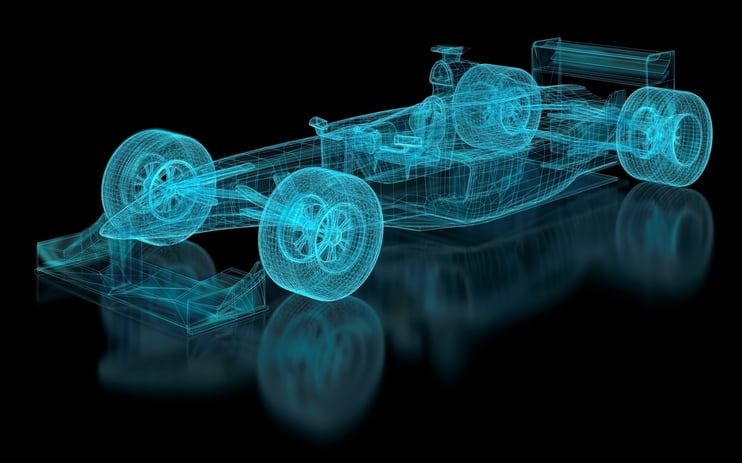 There is an old saying, sometimes attributed to Sochiro Honda, that “Racing improves the breed.” It goes hand in hand with an old NASCAR saying, “Race on Sunday, sell on Monday.” Both sayings capture the excitement of automobile racing, which started way back in June, 1895, when a Panhard won the Paris-Bordeaux race, covering 732 miles in 49 hours, an average of 15 m.p.h.
There is an old saying, sometimes attributed to Sochiro Honda, that “Racing improves the breed.” It goes hand in hand with an old NASCAR saying, “Race on Sunday, sell on Monday.” Both sayings capture the excitement of automobile racing, which started way back in June, 1895, when a Panhard won the Paris-Bordeaux race, covering 732 miles in 49 hours, an average of 15 m.p.h.
Five months later, the first American auto race took place between Chicago and Evanston, Illinois. The winner, a Duryea, took seven hours to cover 54 miles, averaging 7 m.p.h. That set the stage for over a century of competition on the track and in rallies on public roads as well as off-road racing and drag racing. Today, racing is more of a commercial business than a sport, but it wasn’t always the case.
Nevertheless, even people who don’t follow auto racing have personally benefitted from the safety advances of Formula One (F1). Safety sells, so it is important for auto dealership salespeople to point out the active and passive safety technology that is incorporated in the vehicles they are showing today.
The Early Days
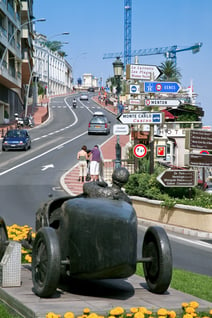 What we call “Formula One” started in 1946, when the rule making body, the Federation International de l’Automobile (FIA) wrote rules which would become effective two years later governing the sport of high speed racing. The first World Championship of Drivers came about in 1950, which started out as a European based series of races in Belgium, England, France, Italy, Monaco and Switzerland.
What we call “Formula One” started in 1946, when the rule making body, the Federation International de l’Automobile (FIA) wrote rules which would become effective two years later governing the sport of high speed racing. The first World Championship of Drivers came about in 1950, which started out as a European based series of races in Belgium, England, France, Italy, Monaco and Switzerland.
The “Golden Years” of Formula 1 were the fifties and sixties. They have also been called “the killer years,” because the cars were built purely for speed, there was little medical support or safety infrastructure. Death was always present. In 1955, a Mercedes Benz crashed at LeMans, killing the driver and 83 spectators. In 1957, at the last running of the Mille Miglia, a Ferrari crashed, killing the driver, co-driver and nine spectators. In 1961, another Ferrari crashed, killing the driver and 15 spectators. At the time, people were used to the idea that a driver might die in a race, and many people found it almost acceptable. There were 29 Formula One driver deaths in the sixties and 18 in the seventies. Jackie Stewart, three-time World Drivers Champion, said of the period, “Anyone continuously racing had a two-out-of-three chance of dying.” Stewart had 57 of his close friends die on the track.
For people who appreciate automotive history and design, the fifties and sixties were wonderful, fascinating, compelling times for race-car design and driver heroism, and even the team owners. People like Enzo Ferrari, Jack Brabham, Colin Chapman, David Brown, and William Lyons were heroes to be followed and appreciated. Moreover, cars such as the Jaguar C and D types, the Maserati 250, the Lancia D-50 and the Aston Martin DB3 were some of the most beautiful things on four wheels ever created.
Modern Formula One
Today, things are different. Some observers call 21st century Formula 1 a “sponsored procession.” You can’t tell one car from another. Many of them use the same motors and the bodies were designed by computer simulation. You can’t see the drivers. Some races are predetermined from the start because it is impossible to pass. There is no relation to production cars found in the showroom. Today’s race cars just don’t have the personality and appeal and desirability of the cars from the Golden Age, when small constructors like Brabham and Lotus competed on small budgets and even factory teams were small operations who raced for the glory and not for advertising rights or promotions. Each individual entry had a story and style and character.
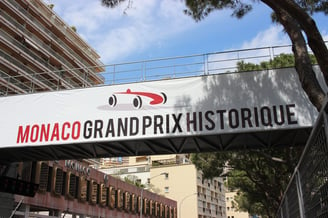 There was even some relation to actual production cars. The motor in a sixties Ferrari or Maserati was related to the motor in the racecar. This isn’t the case today, which is why historic motor racing (like the Monterey Historics every August at Laguna Seca in Monterey County) has become such a phenomenon worldwide. It cannot be dismissed as just nostalgia because people who weren’t even born in 1950 are attending these events today in droves. By contrast, today’s Formula 1 is boring. But in the sixties it wasn’t boring — it was frightening as all hell.
There was even some relation to actual production cars. The motor in a sixties Ferrari or Maserati was related to the motor in the racecar. This isn’t the case today, which is why historic motor racing (like the Monterey Historics every August at Laguna Seca in Monterey County) has become such a phenomenon worldwide. It cannot be dismissed as just nostalgia because people who weren’t even born in 1950 are attending these events today in droves. By contrast, today’s Formula 1 is boring. But in the sixties it wasn’t boring — it was frightening as all hell.
Modern Safety Standards
Ultimately, led by Jackie Stewart, Formula One adopted seat belts (1972), full face helmets, on-site professional medical teams, run-off areas and safety barriers. As a result, it is rare for an F1 driver to die on the track these days.
However, there was a silver lining, of sorts, from the carnage in the past, which is the panoply of innovations which came from racing that are now found on modern cars, including, most of all, safety.
First of all, modern cars are built to a very high standard, much higher than any car built 30 or 40 years ago. Every car is designed to last a long time with very little scheduled maintenance. Second, crashworthiness has been a major factor in automobile design for many years. Don’t believe me? Then see with your own eyes. The below two-minute video, “2009 Chevrolet Malibu versus 1959 Bel Air Crash Test,” demonstrates this clearly.
The following inventions were first used in F1, but are now components of the car in your garage.
Tire Technology — Probably nothing has changed so radically in the last 20 years as has tire technology. Michelin invented the radial tire in 1948, but it was not adopted by American manufacturers until the ill-fated Firestone 500 disaster which unfolded from 1971-78. Firestone recalled 14 million tires at the time, only to have the same problem resurface with the Firestone tires on the Ford Explorer in 1994! This destroyed the brand and ended a 100-year history with the Ford Motor Company. Aside from Firestone, today’s tires have extremely long tread life and excellent lateral grip and braking characteristics, and resist aquaplaning. It is not unusual to drive 50,000 miles on a modern tire and never experience a flat tire!
Disc Brakes — The Jaguar C-type first used disc brakes in the 1953 Le Mans 24-hour race. It allowed them to brake later, reduce stopping distance, and reduce brake pad wear. Jaguar won Le Mans six more times after that. Today, every car has disc brakes.
Aerodynamics and Ground Effects of Downforce (circa 1971) — This is important because it reduces drag, which improves fuel economy, and also makes the car more stable at high speed. With better fuel efficiency, the car can use a smaller motor.
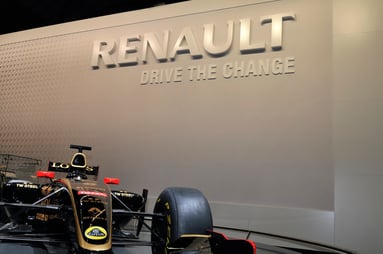 Composite Materials (carbon fiber) — Carbon fiber is now making its way into mainstream manufacturing as the costs come down. It is used for exotic cars today, but ultimately will find its way to regular sedans because of its strength and light weight.
Composite Materials (carbon fiber) — Carbon fiber is now making its way into mainstream manufacturing as the costs come down. It is used for exotic cars today, but ultimately will find its way to regular sedans because of its strength and light weight.
Roll Cage — Modern cars do indeed have a de facto roll cage built into the design. Recently, I was listening to a Jaguar designer talk about how difficult it was to design the roof of a GT coupe because it had to meet government roll-over standards – certainly not the case in the old days.
Oil, Lubricants and Cleaning Agents — Probably just behind tire technology is the enormous improvement in lubricants, which allows modern motors to last 100,000 miles with little wear on the pistons, valves, camshafts, crankshaft, etc. In the good old days, you had to de-coke a motor at 50,000 miles to get rid of the carbon deposits on the valves and pistons. Not anymore.
Weight Reduction and Fuel Economy — The federal government has imposed CAFE (Corporate Average Fuel Economy) requirements, which have forced manufacturers to find more and better ways to increase fuel economy, using some of the lessons learned from the track.
Engine Management Technology — Go to the track and you will see the engineers standing in the pits with their laptops programming engine management systems to get higher performance. The modern car has more computer power than the first spacecraft.
Stability Control — Many modern cars have this feature, which adjusts the suspension for maximum grip, along with anti-lock brakes, to avoid a skid.
Kinetic Energy Recovery Systems — The idea here is to use the energy from the brakes for other purposes. This has not yet filtered down to production cars.
Steering Wheel Functions — This is the last thing I would want – 10 or 20 buttons and a paddle on the steering column, but many people like it and at least they don’t have to look all over the dashboard for these controls.
Summary
There you have it, a little history about Formula 1 racing, getting from the starting line to the finish in the best possible time. Literally hundreds of thousands of lives have been saved by these safety technologies in the last 20 years.
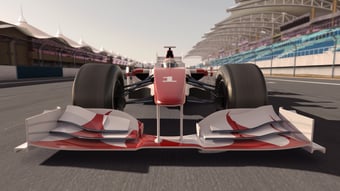 While finalizing the sales process, auto salespeople should know that CrossCheck has been helping consumers get the car of their dreams for over 30 years, even if they are a little short on money at the time for the down payment.
While finalizing the sales process, auto salespeople should know that CrossCheck has been helping consumers get the car of their dreams for over 30 years, even if they are a little short on money at the time for the down payment.
We stand in at point of sale with the popular Multiple Check program, and allow the consumer to write up to four checks, to be deposited on the dates of their choice, over the next 30 days.
Multiple Check is a hassle-free experience for the consumer and the dealer too. And unlike other services that make the consumer apply for credit and ultimately become a “debt trap” charging 22% interest forever, we help the consumer maintain their financial sanity and peace of mind. There’s a lot of safety there for both the dealer and the consumer!
Download our free guide to learn how Multiple Check can help customers at your dealership.



